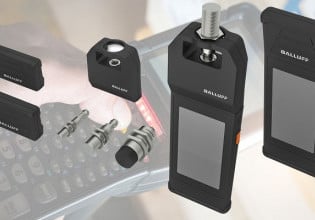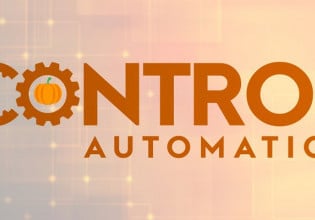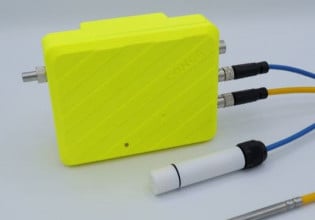Festo Releases New Double Acting Pneumatic Linear Actuator
This week Festo released its latest double-acting pneumatic linear actuator aimed at a wide range of environments including water, industrial, and power.
What are double-acting actuators and what makes this new one different from others?
Festo Double Acting Pneumatic Actuator
The actuators, operated by air, use stainless steel for the piston rod, screws, nuts, and tie rods while the barrel and end caps are made with aluminum.
The choice of materials gives the pneumatic linear actuators a long service life reducing the number of maintenance cycles needed as well as making them reliable. The actuators integrate end-position cushioning for high-speed operating and optical proximity sensors enable reliable end-position detection.
An external displacement encoder can be added for applications where the actuator position is required to be known. The action of the pneumatic actuator is double-acting allowing for powerful control in both directions.
Pneumatic Linear Actuators
Actuators are a critical component in industrial processes as they convert energy into mechanical motion. Actuators come in all shapes, sizes, power, and technology which is why choosing the right one in design is critical.
Some actuators are electrical in nature which use a motor to convert electricity into a rotational movement which can then be made linear with the use of worm gears and rack and pinions. Pneumatic actuators, however, use compressed air as their source of energy, and valves are used to control the flow of air.
The linear actuator released by Fetso is a double-acting piston which is a key feature of the actuator. A single-acting piston is one that has one air inlet, an exhaust output, and internal spring. When air is injected into the actuator the piston shaft is pushed forwards and when this same air inlet is shut off then the spring inside the actuator pulls the piston back into its original resting position.

Festo Double Acting Pneumatic Actuator. Image used courtesy of Festo.
A double-acting actuator, however, has no internal spring with two air connectors that can either be configured as air inlets or air outlets.
Two two air connectors can be used to either push the piston forwards or backward with each stroke having the same power. Unlike the spring, double-acting pistons allow for full control of direction and power and are not reliant on a spring pulling the piston back to its original position.
Pneumatic pistons have some advantages over their electrical counterparts which are becoming increasingly popular. The first is that since pneumatic systems have fewer mechanical components they are more reliable as fewer parts can go wrong.
The second advantage is that pneumatic actuators can operate at higher speeds at higher powers than their electrical counterparts as they often don’t incorporate gearboxes.
Pneumatics are often cheaper than electrical systems as they are simpler in design with less complex control circuitry.
Pneumatic Trends
While electrical actuators are becoming increasingly popular, pneumatic systems are unlikely to ever disappear entirely. The speed and power offered by pneumatics means that they are ideal for fast repetitive work that needs to operate continuously.
Pneumatic systems are produced by a wide variety of industrial manufacturers who also produce double-acting linear actuators, but also produce linear rails that offer high-speed linear table systems.
One feature, however, that will continue to be developed and integrated into pneumatic systems is sensors. The use of end-stop detectors and positioning will help to solve one of pneumatics biggest problems, accuracy, which is most easily achieved in electrical actuators.
Intelligent pneumatic systems can help produce high-speed high-accuracy positioning systems that don’t rely on slow stepper motors with high ratio gearboxes. Such a system would potentially be cheaper and be easily integrated into modern industrial systems.
Do you use double-acting pneumatic actuators?







that’s a good article, thanks